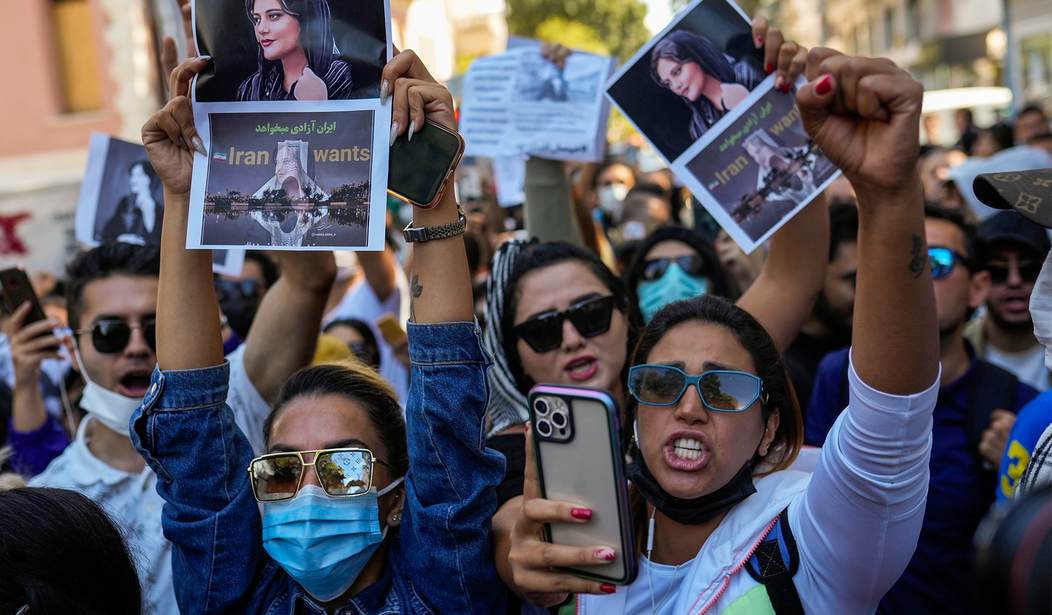Iran held parliamentary elections on Friday. Voter turnout may have been at a record low.
These were the first elections held since the 2022 crackdown on nationwide protests that followed the death of 22-year-old Mahsa Amini in police custody. Mahsa Amini died in September 2022 after she was beaten and arrested by Iran's morality police. She was in public and allegedly in violation of the country's strict headscarf law. Some reports say she wasn't wearing one. After her death, protests began. Soon calls to overthrow Iran's clerical rulers began. Human rights activists in Iran claim that over 500 people were killed and about 20,000 people have been arrested since a severe crackdown on protests began.
The “Woman, Life, Freedom” movement continues today. Iranians began 2024 with a renewed effort by the regime to restart the practice of flogging women who refuse to wear the hijab.
Candidates for Iran's parliament began campaigning on February 22 in Iran's first election since the protests began. On the day before the campaigning began, the Guardian Council - an election watchdog - sent the names of 15.200 qualified candidates to the interior ministry. The interior ministry holds the elections. All candidates must be approved by the 12-member clerical body. Half of the Council is appointed by Iran's supreme leader.
An early indication that the resistance movement was holding some sway was the number of women candidates. The candidates included 1,713 women, which is more than double the 819 who ran in 2020.
Today hard-liners are leading in initial vote counting in Tehran. IRNA, state media, reports Saturday that 1,960 of 5,000 ballots in Tehran have been counted so far. The interior ministry report is updated hourly.
The interesting result of the elections is the low voter turnout.
Officials have not yet released the total voter turnout. However, IRNA said it was 41%, based on unofficial reports.
In the last parliamentary election in 2019, only 42% of eligible voters headed to the ballot stations. It was considered the lowest turnout since the 1979 Islamic Revolution.
So that is IRNA's report. The number is different coming from non-state media sources.
Iran: The actual participation rate in the regime’s elections is 8.2%, equivalent to 5 million people https://t.co/t4BNI9oSdy
— People's Mojahedin Organization of Iran (PMOI/MEK) (@Mojahedineng) March 2, 2024
To oversee the regime’s elections on Friday, March 1, the Social Headquarters of the People’s Mojahedin Organization of Iran (PMOI/MEK) made significant efforts across various cities and many villages and locations where the regime’s supporters cast their votes. This exceptional endeavor involved, wherever possible, video and audio recordings or direct observations, and at times, intentional engagement in the voting process to provide detailed insights, conducted by the observers from the PMOI Social Headquarters.
In these evaluations, 1941 polling stations, including large, medium, and small stations in Tehran and cities, villages, and different regions of the country, were continuously monitored from 8:00 a.m. to 12:00 p.m. in order to verify the correctness of observations, statistics, and reports from other stations. 243 cities in 31 provinces should be checked and tested as much as possible.
The regime, perhaps because of the low turnout, extended the voting period. It was set to conclude at 6:00 p.m. but was extended at several instances until midnight on Friday.
In the 1,941 monitored stations, a total of 156,597 voters were counted, averaging 81 voters per station. Extrapolating this to the entire country’s 59,000 stations, the estimated total number of voters is approximately 4,779,000, rounding up to 5 million. Therefore, given the 61,172,298 individuals eligible to vote as reported by the regime’s election headquarters, the participation rate, including those who voted voluntarily or under compulsion, is calculated to be 8.2%.
As announced by Mrs. Maryam Rajavi, the President-elect of the National Council of Resistance of Iran (NCRI), this was effectively a referendum and a vote by the Iranian people in favor of overthrowing the religious dictatorship.
Non-state media posted tweets showing expressions of anger against the elections.
March 1—Dashtiari, southeast #Iran
— People's Mojahedin Organization of Iran (PMOI/MEK) (@Mojahedineng) March 2, 2024
Locals break ballot boxes to express their utter disdain toward the regime and its sham elections.#IranProtestspic.twitter.com/CzPBZnuSsY
March 1—Mashhad, northeast #Iran
— People's Mojahedin Organization of Iran (PMOI/MEK) (@Mojahedineng) March 1, 2024
The voting station at the Molla Hashem mosque is still empty and waiting for voters to show up.#boycottIranShamElections pic.twitter.com/IZNsWJV3BD
Hard-liners have controlled parliament for decades. The parliament has various roles in Iran, including overseeing the executive branch and voting on treaties. The reality is that Ayatollah Ali Khamenei holds absolute power.
I'm not Pollyannaish about Iran's resistance movement but low voter turnout is a good sign that progress among everyday Iranians is being made. Change won't come quickly for the brave Iranians leading protests for human rights in their country. It is impossible to ignore that this may eventually lead to change. The Ayatollah won't live forever.
No doubt, Khamenei and the Velayat-e Faqih regime will come out of this theatrics, much weaker and more fragile than ever, which will expedite their overthrow.
— Maryam Rajavi (@Maryam_Rajavi) March 1, 2024
The Iranian people’s decisive “No”
is indicative of burgeoning uprisings, the echoes of which have already resonated…







Join the conversation as a VIP Member